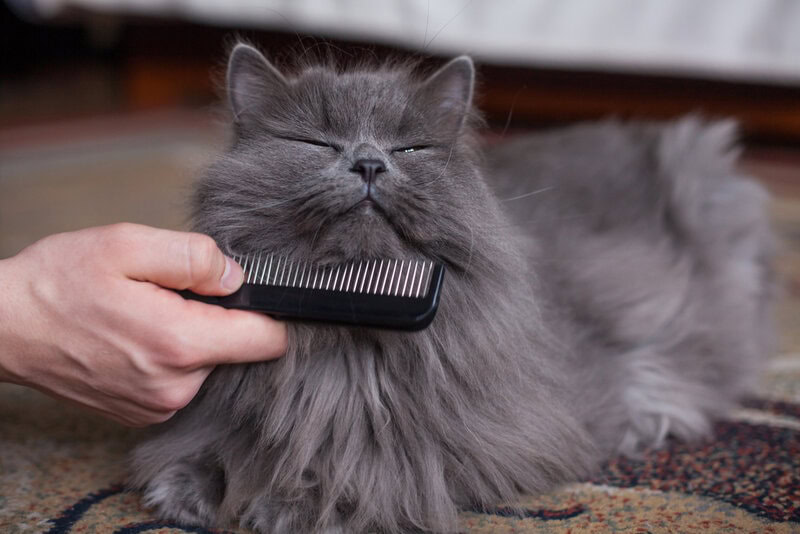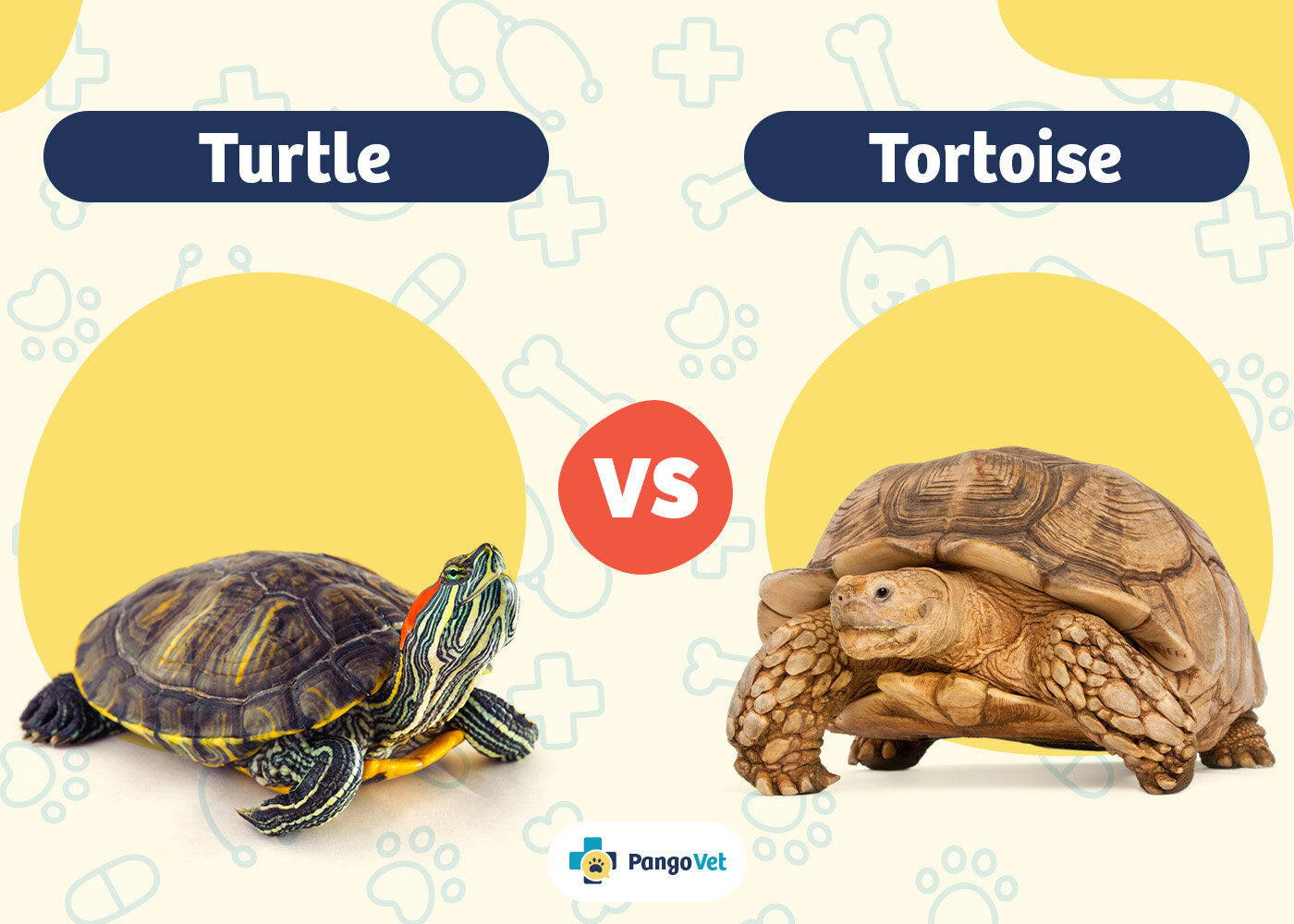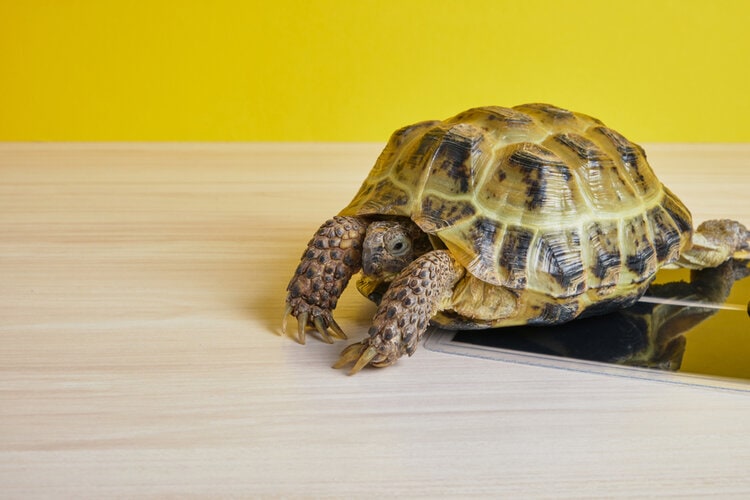VET APPROVED

The information is current and up-to-date in accordance with the latest veterinarian research.
Learn more »Click to Skip Ahead
Cats are excellent groomers and enjoy being clean. Sometimes, no matter how good they are at cleaning themselves, they’ll need a little help from you if they wind up with poop in their fur. Self-grooming can be difficult for cats that are overweight or arthritic, so cleaning excrement out of their fur might be a more regular occurrence. Other times, cats have diarrhea that makes a mess in their litter boxes and on them.
To help, we compiled a list of ways that you can quickly get cat poop out of your cat’s fur and get them back to feeling and smelling fresh.

Before You Start Removing The Poop
Once you know that you must perform this task, it’s best to prepare everything you need before you begin. Even though cats don’t like having poop in their fur, they also won’t always be readily agreeable to everything that you have in mind. Depending on the cleaning method that you’d like to use, you don’t need all these supplies. Still, here is a list of items you can choose from and have on hand for these situations.
- Cat shampoo
- Waterless cat shampoo
- Rubber gloves
- Safety glasses
- Calming cat treats
- Pet grooming wipes
- A large towel
- Washcloths that are only used for this issue
- A comb
- Disinfectant spray
- Grooming scissors
There are a variety of effective, pet-friendly grooming products you can use at home to help make cleaning your pet a breeze and keep them smelling fresh. Here are our top picks.
| Image | Product | Details | |
|---|---|---|---|
For Bathing
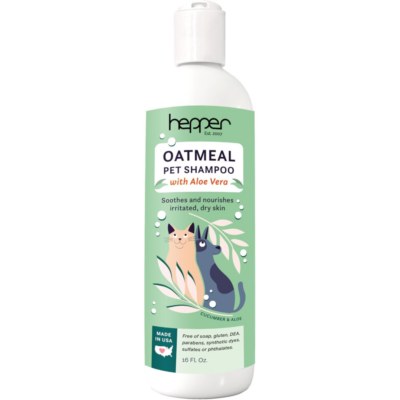 |
Hepper Oatmeal Pet Shampoo |
|
Check Price |
For In-Between Baths
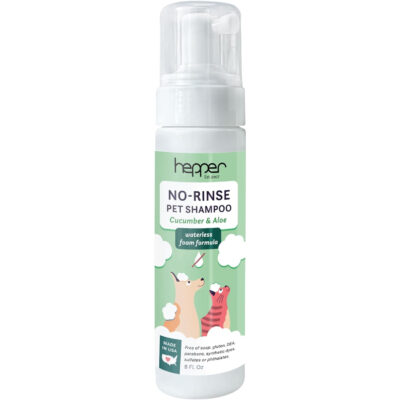 |
Hepper No-Rinse Pet Shampoo |
|
Check Price |
For On-The-Go
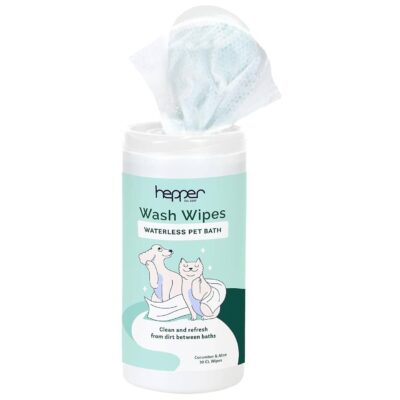 |
Hepper Wash Wipes |
|
Check Price |
At PangoVet, we've admired Hepper for many years, and decided to take a controlling ownership interest so that we could benefit from the outstanding designs of this cool cat company!
Cleaning Preparation
Before you start the cleaning process, it’s best to wear long sleeves and rubber gloves. You’ll want to protect yourself from cat scratches, and you’ll also be handling poop, so it’s best to protect your hands.
Safety glasses should be worn to protect your eyes while bathing your cat. This isn’t required, of course. But a flailing cat could send fecal water splashing into your eyes, which can cause infections. If you don’t wear the glasses, use caution to protect your face from splashes.
Give your cat a calming treat before you start handling them. It could relax them and make it easier for both of you. Regular treats can also be used as rewards and incentives for getting your cat to hold still.
You’ll find different cleaning methods here, so you can choose the one that is easiest for you and your cat.

How to Get Cat Poop Out of Cat Fur: 3 Methods
1. Waterless Shampoo
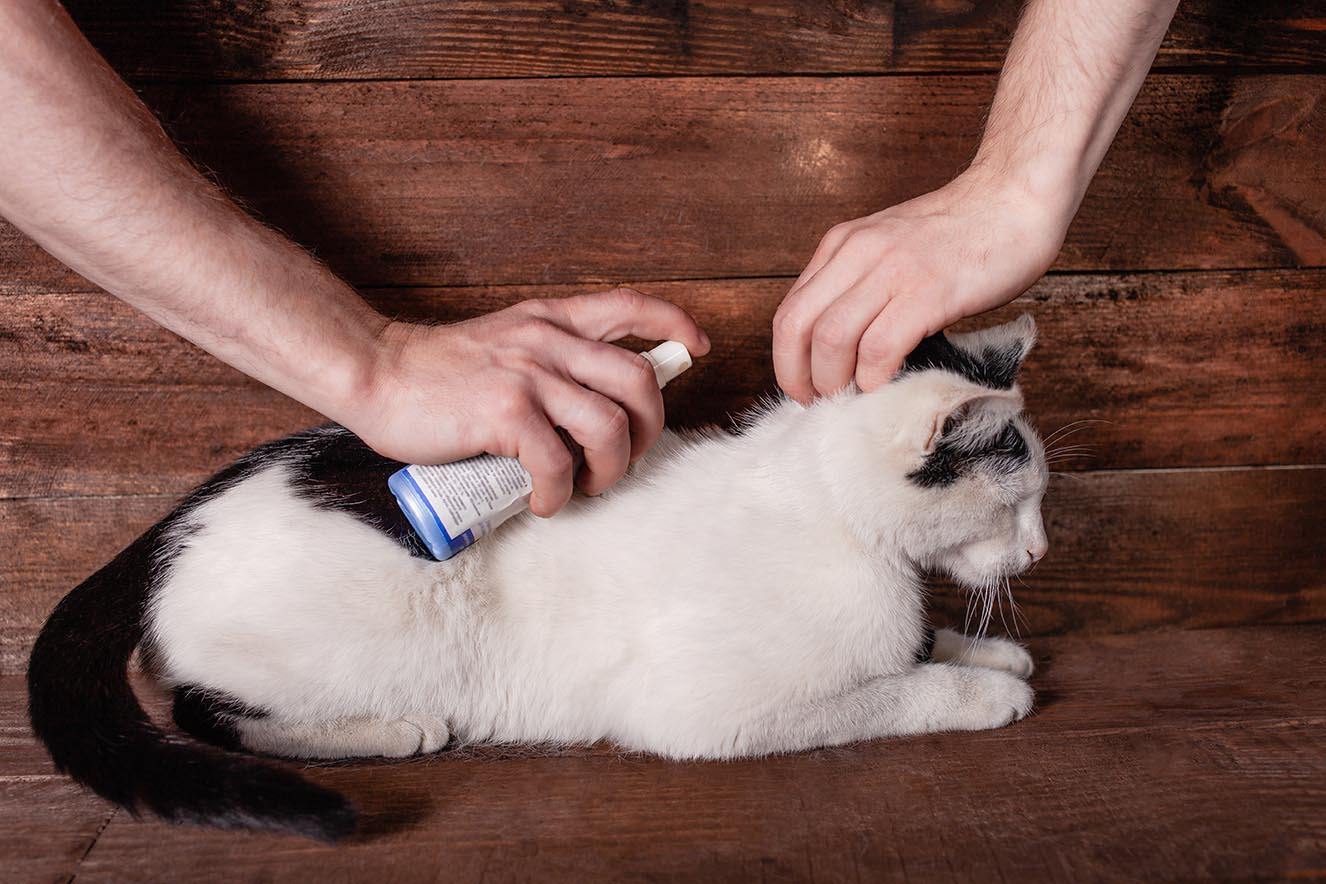
For small messes that don’t require a full bath, waterless shampoo can be a real hero. It usually comes in a spray bottle so that you can use a targeted aim and spray the product where you need it. It’s ideal for feces that have hardened in the fur or left a dry residue on the tail or legs. Just spray the shampoo on, and use a warm, damp cloth to work the poop out of the fur. Be sure to use this cloth only for these purposes.
2. Pet Grooming Wipes
This simple solution involves taking a pre-moistened pet grooming wipe and cleaning the poop from your cat’s fur. It’s a one-step process and works well for poop that wasn’t fully eliminated or got stuck in the fur but didn’t make a huge mess.
Treats are important to use here because if your cat gets used to seeing you come at them with a grooming wipe, they may instantly run and hide. Keep them around with treats, and make the process as stress-free as possible.
3. Full Bath
If the mess is too much for waterless shampoo or grooming wipes to tackle, you’ll have to bathe your cat. Depending on the extent of the poop in the fur, you can either just clean the back end of their body or give them a full bath.
In some instances, you may need to actually trim or clip the fur off before giving them a bath, especially if the feces is very dry, forming mats, not dissolving easily, or it’s stuck to the skin. Be especially careful in doing so, and only do it if you have experience trimming the fur around the back end and a helper to keep the cat still. A sudden movement or uncertainty about where the hair ends and skin begins, can easily lead to a skin injury that will require veterinary attention.
If you managed to trim the fur off or it isn’t necessary in your cat’s case, you can proceed with a gentle bath. Fill the tub or sink with warm water before collecting your cat. The sound of running water might freak them out.
Once they’re in the water, wet the affected areas and massage cat shampoo in their fur to loosen and remove any stuck poop. Use a showerhead or clean water that you’ve set aside beforehand to rinse your cat.
It’s important not to use the water the cat is standing in to rinse them. This water is contaminated with fecal matter. Drain the tub or sink, and rinse the cat clean after washing them.
When you think all the shampoo is out of your cat’s fur, rinse them again just to be sure. Then, wrap them in a large towel and start drying them.
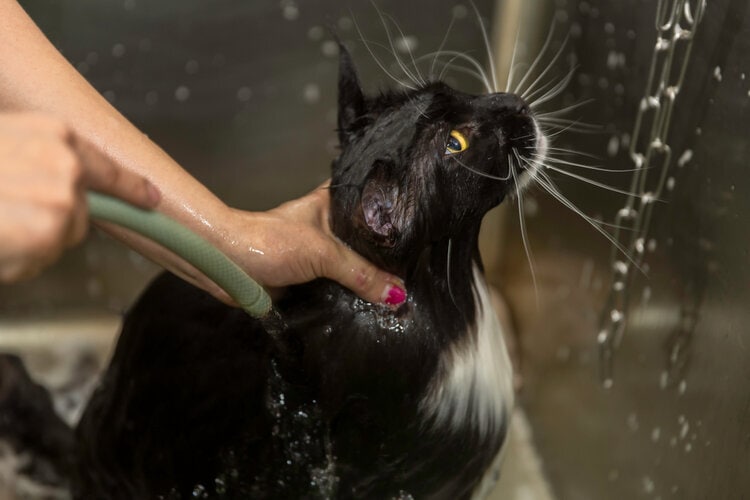

After Cleaning
Once your cat is clean, you can use a comb to brush their fur to keep it from matting. Also, be sure to clean the tub or sink with disinfectant spray to eliminate any germs that might be left behind.

For Long-Haired Cats
The cleaning methods mentioned here should work for short- and long-haired cats. However, long-haired cats may require more work and longer times in the bath to get the poop out of their fur. Their long hair provides more places for it to get stuck. Clumps and mats can then form that need to be cut out.
If your long-haired cat isn’t coming clean, no matter which cleaning method you try, consider trimming the clump of poop out. It may lead to a choppy-looking coat, but it’s better than having excrement in it.
Sometimes, just one or two careful snips with scissors can loosen the clump enough to be worked out with your fingers. You don’t have to cut much unless the clump is compacted and hard. Always be particularly observing and gentle during this step, to make sure not to cut the skin or cause pain to your cat.
Professional Grooming & Vet
If you cannot clean your cat, you can always take them to a professional groomer. A groomer will bathe your cat, clip their fur, and shave any areas on their rear end where poop is likely to get stuck again. This can help reduce future buildup.
For cases where the poop situation is out of hand or your cat is uncomfortable, it’s important to get them seen by a vet, who can resolve the issue carefully and thoroughly. If your cat is in pain or there is a need for more extensive fur trimming, they may have to be sedated. In those cases, you’d need to bring your cat to the vet fasted so they can sedate them safely and clean them.
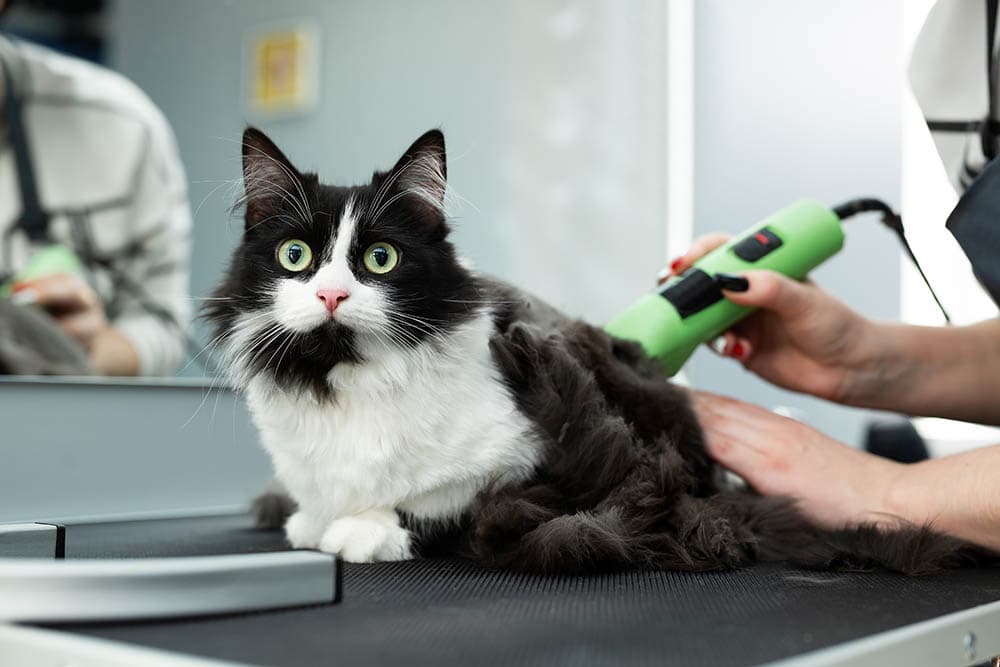

Cat Poop on Cat Hair Prevention
You can take these steps to stop poop from getting stuck in your cat’s fur, especially if it is a common occurrence.
Consult With Your Vet
If your cat has frequent diarrhea, they may be sensitive or allergic to something in their food, or may suffer from chronic digestive issues, such as inflammatory bowel disease or chronic pancreatitis. Speak to your vet about possible causes of loose stools and work with them to devise a diet and treatment plan. Once you eliminate the culprit, your cat’s digestive system should return to normal, sometimes with the help of ongoing medication.
Watch Their Weight
Obese cats have difficulty grooming themselves and cannot reach their butts if they are too heavy. While regular, daily grooming keeps cats clean all over, the areas that they can’t reach can build up with dirt or, in this case, poop. If your cat is heavier, you may need to clean them regularly. Once they lose a little weight, they should be able to go back to grooming themselves properly.
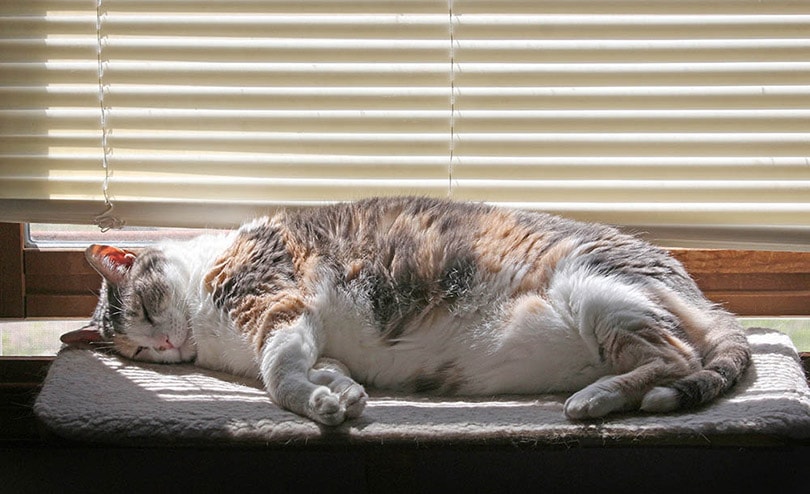
Keep Fur Trimmed
This is mainly for long-haired cats, but short-haired cats may still benefit from it. Trimming the fur keeps it from getting in the way and getting covered in poop. Keeping the fur around your cat’s butt trimmed might seem tedious, but it can prevent you from having to clean them frequently.
Clean the Litter Box
Cats like a clean litter box. Digging, burying, and walking in a dirty litter box can cause the waste to stick to their paws and fur. A clean box also gives them a bigger area to use. If they’re trying to fit into the only clean spot, poop can get into their fur as they go.
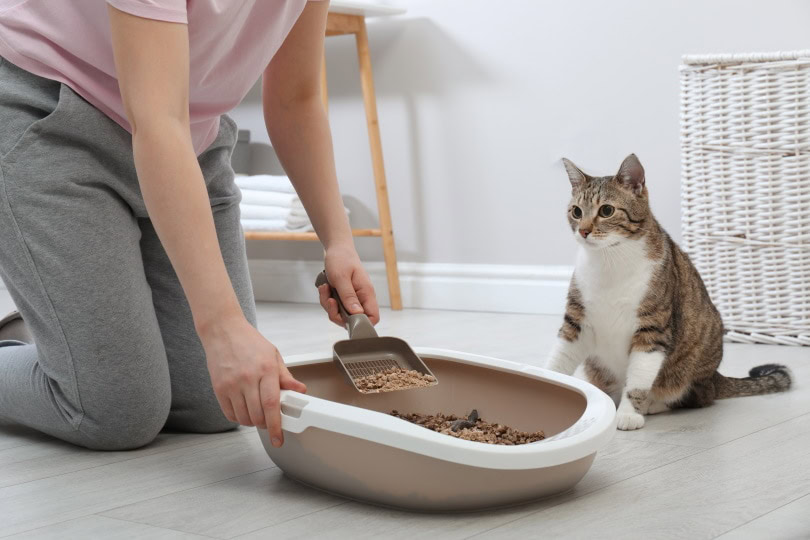

Conclusion: How to Get Cat Poop Out of Cat Fur
Cleaning poop out of your cat’s fur isn’t the most pleasant task, but it needs to be done. Sometimes, all cats need is a quick wipe to solve the problem. For messier situations, full baths may be in order. By using the methods that we’ve listed in this article, you can make the experience quick, stress-free, safe and as easy as possible.
We hope you’ve found a solution to this issue and ways to prevent it from happening.
- Only Natural Pet Shampoo - Our vegan, plant-based formulation is made with safe and natural...
- No Soap - A cat and dog wash free from soaps, glutens, dyes, DEA, sulfates and phthalates means it's...
- Colloidal Oatmeal - Formula soothes and nourishes dry, irritated skin, providing itchy skin relief...
- Related Read: Why Do Cats Poop When They Are Scared? Possible Reasons
Featured Image Credit: Jakub Zak, Shutterstock
